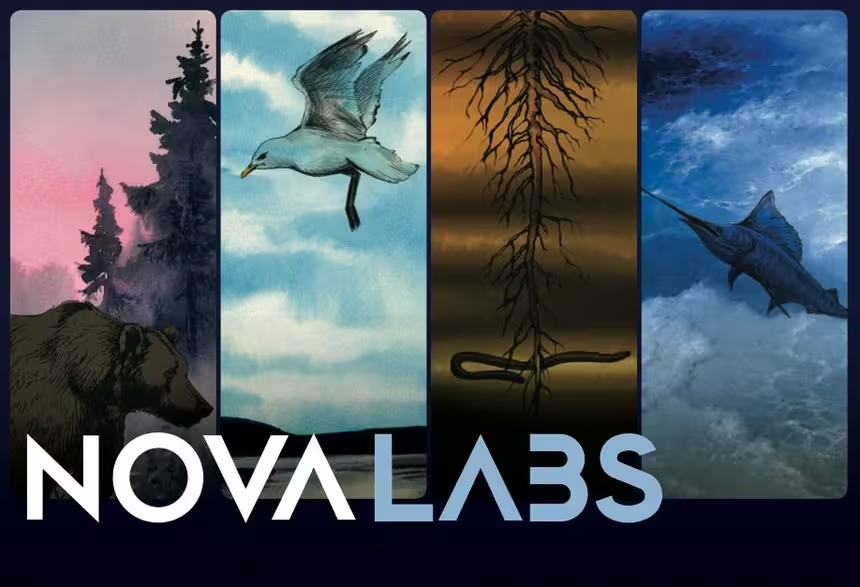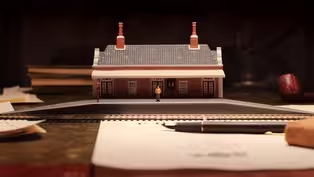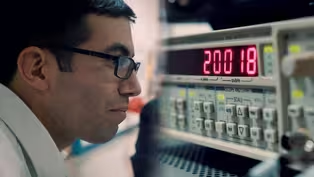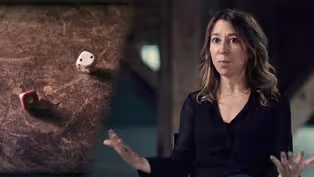
Einstein's Thought Experiment That Transformed Physics
Clip: Season 42 Episode 23 | 2m 10sVideo has Closed Captions
The faster you move, the stranger time becomes.
By imagining how light travels to two people moving at different speeds, Einstein showed that time isn’t absolute. His thought experiment revealed that what seems like “now” depends on where you are and how fast you’re moving.
Problems playing video? | Closed Captioning Feedback
Problems playing video? | Closed Captioning Feedback
National Corporate funding for NOVA is provided by Carlisle Companies and Viking Cruises. Major funding for NOVA is provided by the NOVA Science Trust, the Corporation for Public Broadcasting, and PBS viewers.

Einstein's Thought Experiment That Transformed Physics
Clip: Season 42 Episode 23 | 2m 10sVideo has Closed Captions
By imagining how light travels to two people moving at different speeds, Einstein showed that time isn’t absolute. His thought experiment revealed that what seems like “now” depends on where you are and how fast you’re moving.
Problems playing video? | Closed Captioning Feedback
How to Watch NOVA
NOVA is available to stream on pbs.org and the free PBS App, available on iPhone, Apple TV, Android TV, Android smartphones, Amazon Fire TV, Amazon Fire Tablet, Roku, Samsung Smart TV, and Vizio.
Buy Now

NOVA Labs
NOVA Labs is a free digital platform that engages teens and lifelong learners in games and interactives that foster authentic scientific exploration. Participants take part in real-world investigations by visualizing, analyzing, and playing with the same data that scientists use.Providing Support for PBS.org
Learn Moreabout PBS online sponsorship- [Narrator] In 1912, Einstein is living in Zurich with his wife, Mileva, and two young sons, Hans and Eduard.
The academic world had realized the importance of special relativity and his career had taken off.
He's now a professor at the esteemed Swiss Federal Institute of Technology, but spends as much time as possible working on his theory.
He needs mathematics that describes how objects move in space and time, and soon realizes that the best tool for the job is a strange but powerful concept called space-time.
- If I think of space, I know that I can find anything if I know where it is, north-south, east-west, and up-down, three points.
But that doesn't mean I can find it because I have to know where it is in time.
And so if we start to think to know everything about an event in the universe, I have to know not just its spatial coordinates, but also its time coordinate, I can begin to think about where it is in space-time.
- [Narrator] Imagine a camera filming an action, capturing each moment in time as a single frame.
(dramatic music) - Einstein basically tells us, think of the movie reel.
So you have all these little pictures.
Now cut them apart one by one and stack them on top of each other.
You get this pile, and if you go up in the pile, you go up in time.
And now kind of glue them all together into one big block, and that block has both space and time, and that's the space-time continuum.
It's almost, looking at the movie, not frame by frame, but seeing the whole movie at once.
They would now be kind of two strands going up in space and time, and there would be kind of spaghetti strands.
In fact, we all are spaghetti strands moving in this space-time.
- [Narrator] Einstein feels that space-time is the natural arena in which his theory of relativity should play out, but now he needs sophisticated mathematics - By your standard or mine, Einstein was good at math.
He was Einstein, but he was not really a mathematician per se.
He didn't prove theorems, he didn't pour over math books.
He was a physicist.
He did thought experiments.
He thought of very tangible, concrete situations, and what would happen.
So when it came time for him to really bear down to the absolute cutting edge mathematics of his day, he required help.
- [Narrator] At university Einstein had skipped the geometry classes, letting his friend, Marcel Grossmann, take notes for him.
Grossmann had excelled in geometry and was now chairman of the math department.
He suggests Einstein uses advanced mathematics in which the shape of space and time could be curved.
- Because space-time has a geometry, he thinks to himself, well, maybe it's the actual shape of space-time itself that is giving rise to gravity.
- [Narrator] After months of work, Einstein has an extraordinary idea.
What if space-time is shaped by matter, and that's what we feel as gravity?
- In struggling to figure out what causes gravity then, Einstein has this great insight.
It is simply that a mass distorts the shape of space-time around it.
So we get rid of this force of gravity, and instead we have curvature of space-time.
- In Einstein's universe then, if space were empty, it would be flat.
There'd be nothing going on.
But as soon as you put objects down, they warp the space and time around them and that causes a deviation of the geometry so that now things start moving.
(upbeat music) - Everything wants to move as simple as possible through space and time.
But Einstein tells us that mass sculpts space and time, and it's the curved motion through this sculpture as the force of gravity.
- We have this feeling that the reason I can feel pressure on the soles of my feet, that the reason things are gonna drop when I throw them are because there's a force attracting us down to the center of the Earth.
What general relativity tells you is that's not the right way to think about what's going on there.
What's really going on is that your natural path in space-time would take you to the center of the Earth, and what's actually happening is the floor is getting in the way.
It's pushing you upwards.
- We look at it, we go, "Ah, the force of gravity."
But Einstein says, "No, no, no, the curvature of space-time."
Video has Closed Captions
Clip: S42 Ep23 | 1m 49s | Your perception of time depends on how you are moving. (1m 49s)
Video has Closed Captions
Clip: S42 Ep23 | 1m 48s | Einstein's theory showed that time itself is affected by gravity. (1m 48s)
How Einstein Changed the Way We Understand Gravity
Video has Closed Captions
Clip: S42 Ep23 | 5m 36s | In 1912, Albert Einstein had a revolutionary idea. (5m 36s)
Video has Closed Captions
Clip: S42 Ep23 | 2m 6s | A mysterious concept changed the way we understand reality. (2m 6s)
Providing Support for PBS.org
Learn Moreabout PBS online sponsorship
- Science and Nature

Capturing the splendor of the natural world, from the African plains to the Antarctic ice.













Support for PBS provided by:
National Corporate funding for NOVA is provided by Carlisle Companies and Viking Cruises. Major funding for NOVA is provided by the NOVA Science Trust, the Corporation for Public Broadcasting, and PBS viewers.






